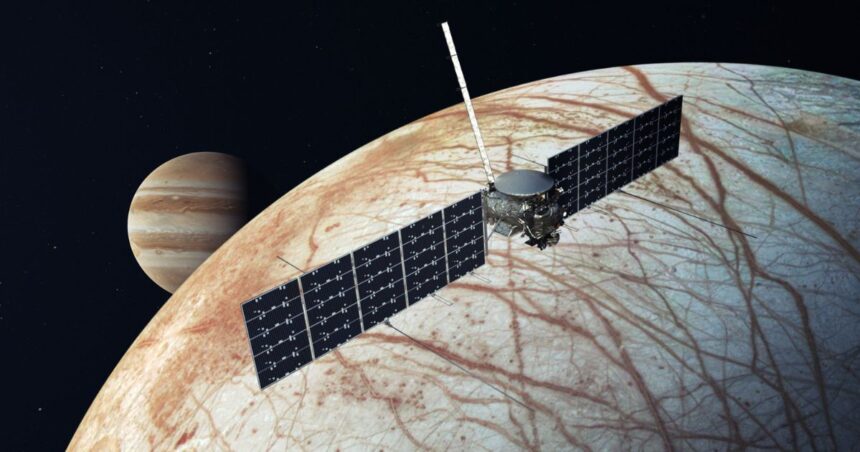NASA’s Europa Clipper is all set for its much-anticipated launch on October 10, 2024. This mission aims to explore Jupiter’s icy moon, Europa. Despite concerns about radiation, the mission is on track.
The Europa Clipper mission is a significant step in space exploration. It will investigate whether Europa, one of Jupiter’s moons, could support life. Scientists believe that beneath Europa’s icy crust lies a vast ocean. This ocean might have the conditions needed for life.
Launch Details
The spacecraft will launch from Kennedy Space Center in Florida. It will be carried by a SpaceX Falcon Heavy rocket. The launch window opens on October 10, 2024, and extends through October 30, 2024. If needed, additional dates in early November are available.
One of the biggest challenges for the Europa Clipper mission is radiation. Jupiter’s radiation belts are intense. They can damage spacecraft electronics. To tackle this, the Europa Clipper is equipped with radiation-hardened components. These components are designed to withstand the harsh environment.
Scientific Goals
The primary goal of the Europa Clipper mission is to determine if Europa’s ocean could support life. A variety of scientific equipment will be carried by the spaceship. These instruments will study the moon’s ice shell and subsurface ocean. They will also analyze the moon’s surface composition and geology.
Instruments on Board
The Europa Clipper will have several advanced instruments. These include:
- Radar for Europa Assessment and Sounding: Ocean to Near-surface (REASON): This radar will penetrate the ice to study the subsurface structure.
- Mass Spectrometer for Planetary Exploration/Europa (MASPEX): This instrument will analyze the moon’s surface and atmosphere.
- Europa Imaging System (EIS): This camera system will capture high-resolution images of the moon’s surface.
After launch, the Europa Clipper will embark on a long journey to Jupiter. It is expected to arrive in April 2030. The spacecraft will enter a long, looping orbit around Jupiter. This orbit will allow it to make multiple flybys of Europa. Each flyby will bring the spacecraft close to the moon’s surface, allowing for detailed observations.
The Europa Clipper mission is crucial for several reasons. First, it will provide valuable data about Europa’s potential to support life. Second, it will help scientists understand the moon’s geology and ice shell. Finally, it will pave the way for future missions to Europa and other icy moons.
Despite the excitement, the mission faces several challenges. Radiation is a significant concern. The spacecraft must also navigate the complex gravitational environment around Jupiter. Additionally, the mission must operate for several years in deep space.




